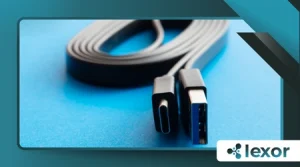Understanding USB-C: What Makes It the Future of Charging

The tech world thrives on evolution, and USB-C stands at the forefront of this relentless progress.
No longer just a port, it’s a revolution in connectivity, power delivery, and data transfer.
But what exactly makes USB-C the undisputed future of charging?
For decades, consumers struggled with a mess of proprietary chargers, slow data speeds, and frustratingly non-universal ports.
Then came USB-C, a single, elegant solution designed to replace them all. Its symmetrical, reversible design was just the beginning.
Today, it powers everything from smartphones to high-end workstations, proving that true universality in tech isn’t just possible—it’s inevitable.
The European Union’s mandate for a common charging standard accelerated adoption, but USB-C’s dominance was already underway.
Major tech giants, from Apple to Samsung, have embraced it, signaling a rare industry-wide consensus.
The question isn’t whether USB-C will become the standard, but how quickly it will render older technologies obsolete.
Universal Solution We’ve Been Waiting For
The frustration of fumbling with a USB-A cable, trying (and failing) to plug it in correctly, is a relic of the past.
This small but transformative feature alone has saved countless hours of collective frustration.
Beyond convenience, he represents a philosophical shift in tech design. Instead of each company pushing its own proprietary standard, the industry is finally converging on a single, superior solution.
Apple’s long resistance to abandoning Lightning ports crumbled in 2024, not just due to regulatory pressure but because consumers demanded the efficiency he offers.
Even niche devices, like professional audio interfaces and high-end gaming peripherals, are now adopting USB-C.
++Automating Your Morning Routine with Smart Tech
The days of carrying a bag full of adapters are numbered. Why settle for fragmentation when a universal standard exists?
Speed, Power, and Versatility in One Port
Imagine a single cable that can charge your laptop, transfer 4K video files in seconds, and connect to an external display—all simultaneously. That’s the reality of USB-C.
Unlike older USB standards, which were limited by fixed roles, he is dynamic, adjusting its function based on what’s connected.
Power Delivery (PD) 3.1 takes this further, supporting up to 240W—enough to power high-performance gaming laptops and even some desktop replacements.
Meanwhile, USB4 v2.0 pushes data transfer speeds to an astonishing 80Gbps, making file backups and large media transfers nearly instantaneous.
++What to Look for in a High-Performance Laptop
The implications for professionals are staggering. A videographer can now dump hours of 8K footage from a camera to a laptop in minutes, all while keeping devices charged.
No more juggling multiple ports or waiting for sluggish transfers.
The Numbers Don’t Lie
According to a 2024 report by the USB-IF, over 90% of new laptops and 80% of smartphones now feature USB-C. The standard isn’t just growing—it’s dominating.
| Feature | USB-C Capability |
|---|---|
| Power Delivery | Up to 240W (USB PD 3.1) |
| Data Transfer | 80Gbps (USB4 v2.0) |
| Video Output | 8K @ 60Hz |
| Audio Support | High-res digital audio |
Why Other Standards Can’t Compete

Micro-USB was a stopgap solution—flimsy, slow, and prone to wear. Lightning ports, while durable, were locked behind Apple’s ecosystem, forcing users into expensive proprietary accessories.
USB-C eliminates these limitations with an open, robust design that outperforms them all.
Wireless charging, often touted as the future, still lags in efficiency. Try charging a tablet wirelessly while using it—the process is slow, generates heat, and often requires precise alignment.
++Tech Comparison: Android vs iOS Devices in 2025
USB-C delivers fast, consistent power without these drawbacks.
Even Thunderbolt, once a premium feature, now relies on USB-C’s physical form. The convergence means consumers no longer need to choose between speed and compatibility. One port does it all.
Real-World Impact: Two Examples
1. The Traveler’s Dream
A photographer on assignment no longer needs separate cables for a camera, laptop, and phone. One cable powers all three, streamlining workflow.
Cameras like the latest Sony Alpha series now include USB-C for both data transfer and charging, eliminating the need for bulky battery grips on long shoots.
2. The Eco-Conscious Shift
Standardizing USB-C reduces e-waste. Fewer chargers in landfills mean a greener tech ecosystem—something companies and consumers now demand.
The EU estimates that the shift to a common charger will save over 1,000 tons of electronic waste annually.
The Hidden Advantages: Durability and Longevity
Unlike Micro-USB, which often failed after a few hundred insertions, USB-C connectors are rated for 10,000+ cycles.
This durability makes it ideal for devices that undergo frequent plugging and unplugging, like tablets or docking stations.
The port’s slim profile also allows for thinner devices without sacrificing functionality. Modern ultrabooks, like the Dell XPS 13, have shed multiple ports in favor of USB-C, proving that less can indeed be more.
The Road Ahead: What’s Next?
With USB4 v2.0 pushing speeds beyond 80Gbps and PD 3.1 enabling 240W charging, USB-C isn’t slowing down. Could it eventually replace all ports? Maybe.
Emerging technologies, like single-cable VR setups and USB-C-powered monitors, suggest a future where one port handles everything.
Even desktop PCs are increasingly adopting USB-C-only front panels, signaling a broader shift.
But here’s a thought: When was the last time a single technology unified an entire industry? USB-C isn’t just the future—it’s the present, reshaping how we interact with devices every day.
For deeper insights, check out USB-IF’s official specifications and The Verge’s coverage on USB-C adoption.
The revolution is here. Are you plugged in?
Frequently Asked Questions
Q: Can I use any *USB-C* cable for fast charging?**
A: Not all cables support high-wattage Power Delivery. For best results, use certified cables rated for your device’s power needs.
Q: Will *USB-C* replace HDMI and DisplayPort?**
A: Many modern monitors already use USB-C for video input, but dedicated ports may remain for specialized high-refresh-rate displays.
Q: Why did Apple finally switch to **USB-C?
A: Between regulatory pressure and consumer demand for faster charging and data speeds, the move was inevitable.
